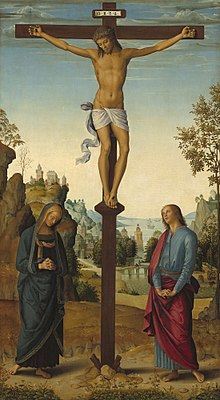CONSECRATION TO
OUR LADY OF SORROWS
Most holy Virgin and Queen of Martyrs,
Mary, would that I could be in Heaven,
there to contemplate the honours rendered to thee
by the Most Holy Trinity
and by the whole Heavenly Court!
But since I am still a pilgrim in this vale of tears,
receive from me, thy unworthy servant and a poor sinner,
the most sincere homage
and the most perfect act of vassalage
a human creature can offer thee.
In thy Immaculate Heart,
pierced with so many swords of sorrow,
I place today my poor soul forever;
receive me as a partaker in thy dolors,
and never suffer that I should depart from that Cross
on which thy only begotten Son expired for me.
With thee, O Mary,
I will endure all the sufferings,
contradictions, infirmities,
with which it will please thy Divine Son
to visit me in this life.
All of them I offer to thee,
in memory of the Dolors
which thou didst suffer during thy life,
that every thought of my mind,
every beating of my heart
may henceforward be an act of compassion to thy Sorrows,
and of complacency for the glory
thou now enjoyest in Heaven.
Since then, O Dear Mother,
I now compassionate thy Dolors,
and rejoice in seeing thee glorified,
do thou also have compassion on me,
and reconcile me to thy Son Jesus,
that I may become thy true and loyal son (daughter);
come on my last day and assist me in my last agony,
even as thou wert present at the Agony of thy Divine Son Jesus,
that from this painful exile I may go to Heaven,
there to be made partaker of thy glory.
Amen.
Now for a picture of one of my favorite altars dedicated to Our Lady of Sorrows in Santa Maria dei Servi, Siena, Italy:

We owe a debt of gratitude to the Servites who, only five years after their founding in 1238, took up the sorrows of Mary, standing under the Cross, as the principal devotion of their order. Then, at a provincial synod of Cologne in 1413, the Feast of Commemoratio angustiae et doloris B. M. V. was established and was set on the Friday after the third Sunday after Easter. It was established as a response to the iconoclasm of the Hussites, the followers of Jan Hus. Alive during the late 14th century, he is actually credited as the first actual Church reformer due to his significant role as a a key predecessor to the thoughts of Luther, Calvin, and Zwingli during the Protestant movement of the sixteenth century. He is famed for having been burned at the stake for heresy...now that is a thought...nevermind :)
The object of these feats is the spiritual martyrdom of the Mother of God. "Attend O ye who pass by the way, and see if there be any sorrow like unto my sorrow"...yeah didn't think so. Without suffering death, Our Lady, staying close to the Cross (good example for us), won the martyr's crown. May we learn to attach ourselves to the sufferings of Our Lady and Our Lord on that glorious day when she gave her son to the torment of His crucifiers so that we might be saved!

Cor Jesu Sacratissimum, Miserere Nobis!
Cor Immaculatum Mariae, ora pro nobis!

No comments:
Post a Comment